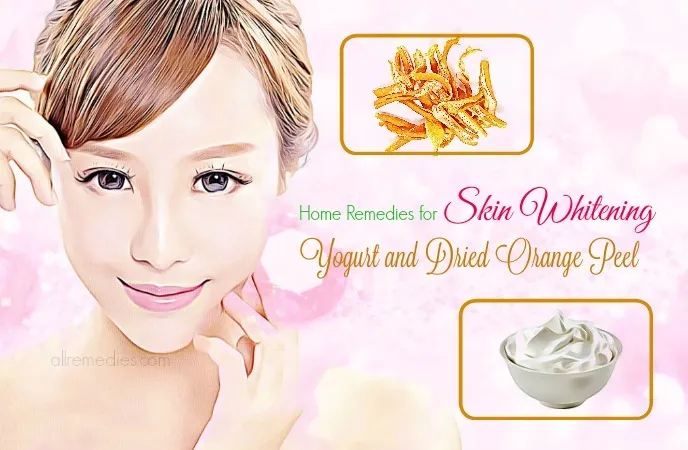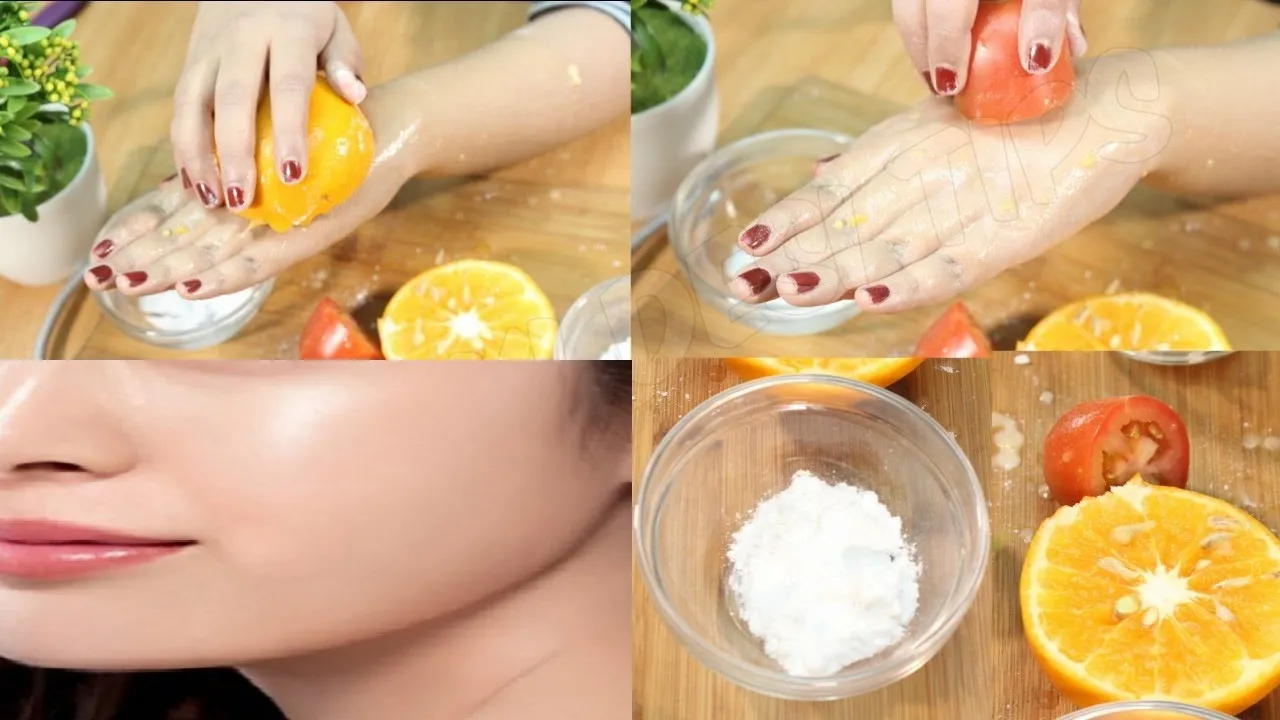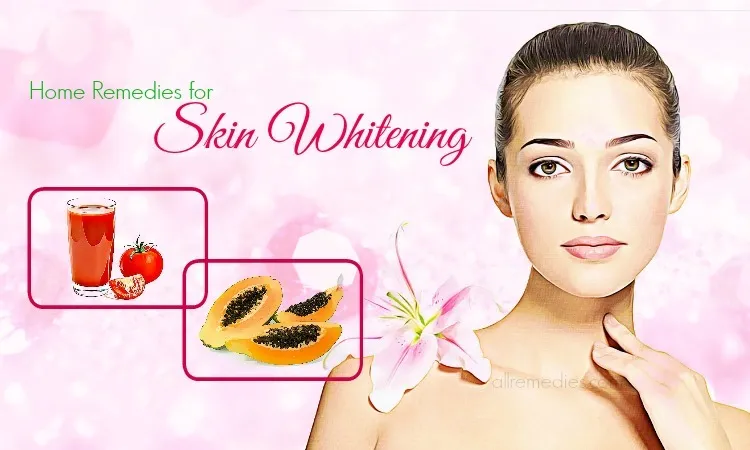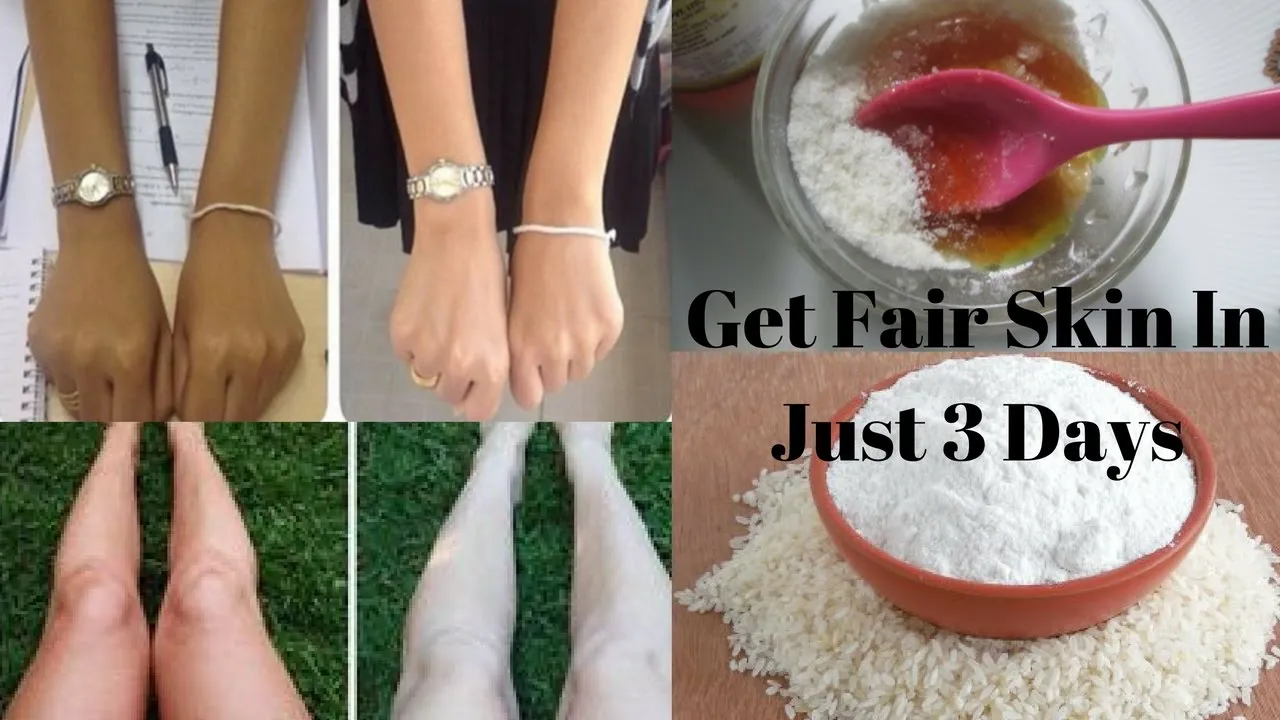Understanding Skin Whitening Home Remedies
Skin whitening, often sought after for aesthetic reasons, involves reducing the appearance of dark spots, uneven skin tone, and hyperpigmentation. This can be achieved through various methods, and home remedies offer a natural and accessible approach. These remedies typically utilize ingredients readily available in your kitchen, offering a gentle alternative to harsh chemical treatments. However, it’s crucial to understand that the effectiveness of home remedies varies, and results may not be immediate. Consistency and patience are key. Furthermore, it’s important to have realistic expectations and to prioritize skin health above all else. Always perform a patch test before applying any new remedy to a larger area, and consult with a dermatologist if you have any concerns or pre-existing skin conditions. This holistic approach ensures both safety and optimal results in your skin-whitening journey. Moreover, understanding your skin type and its specific needs is vital in tailoring the right remedies for your skin’s unique requirements and ensure that any chosen remedy aligns well with your skin’s sensitivity and potential for reactions. This personalization is a critical step.
What Causes Skin Discoloration
Skin discoloration, the primary concern addressed by skin whitening remedies, stems from a variety of factors that disrupt the natural pigmentation process. The most common cause is an overproduction of melanin, the pigment responsible for skin color. This overproduction can be triggered by sun exposure, leading to sunspots, freckles, and tanning. Hormonal changes, such as those experienced during pregnancy (melasma), can also contribute to uneven skin tone. Furthermore, inflammation, caused by acne, eczema, or other skin conditions, can leave behind post-inflammatory hyperpigmentation (PIH), resulting in dark spots. Genetics play a significant role as well; some individuals are naturally more prone to hyperpigmentation than others. Other factors include certain medications, skin injuries, and underlying medical conditions. Identifying the root cause of your skin discoloration is crucial because different causes may require different approaches to treatment. A dermatologist can help determine the specific cause and recommend the most appropriate course of action, whether it involves home remedies, professional treatments, or a combination of both. Proper diagnosis is the foundation for effective skin care.
Factors Affecting Skin Tone

Several factors influence skin tone beyond just melanin production. These include genetics, which dictate the baseline level of melanin and the skin’s sensitivity to environmental factors. Sun exposure is perhaps the most significant external factor, as UV radiation stimulates melanin production, leading to tanning and potentially causing long-term damage and hyperpigmentation. Hormonal fluctuations, particularly those related to pregnancy or hormonal imbalances, can trigger melasma, a condition characterized by dark patches on the face. Age also plays a role, as the skin’s ability to regenerate and maintain an even tone diminishes over time. Lifestyle choices, such as smoking and poor diet, can negatively impact skin health and contribute to uneven pigmentation. Skin care habits, including the use of harsh products or improper cleansing, can also cause irritation and exacerbate discoloration. Environmental factors, such as pollution, can also contribute to skin damage. Understanding these factors allows for a more comprehensive approach to skin whitening, incorporating lifestyle changes, sun protection, and appropriate skincare routines to achieve and maintain a healthy, even skin tone. Combining these insights is crucial.
The Role of Home Remedies in Skin Whitening
Home remedies offer a gentle and accessible pathway to skin whitening, primarily by targeting melanin production and promoting skin cell turnover. They often contain natural ingredients with properties that inhibit tyrosinase, an enzyme crucial for melanin synthesis. These remedies can also provide antioxidants, which combat free radical damage and protect the skin from further discoloration. Many home remedies help exfoliate the skin, removing dead cells and revealing a brighter complexion. The benefits of home remedies extend beyond whitening, often including improved skin hydration, reduced inflammation, and enhanced overall skin health. However, it’s important to understand that home remedies are typically less potent than professional treatments, and results may take time to become apparent. They are best suited for addressing mild discoloration, maintaining an even skin tone, and complementing other skincare practices. Home remedies offer a cost-effective and readily available starting point, but they should be approached with realistic expectations and a commitment to consistent use and always combined with a healthy lifestyle.
Effective Home Remedies for Skin Whitening
Several home remedies have gained popularity for their skin-whitening properties, harnessing the power of natural ingredients. Lemon juice, known for its citric acid content, acts as a natural bleaching agent, promoting skin exfoliation and potentially lightening dark spots. Turmeric, with its active compound curcumin, offers antioxidant and anti-inflammatory benefits, which can improve skin tone and reduce hyperpigmentation. Aloe vera provides soothing and hydrating properties, supporting skin repair and reducing the appearance of dark spots. Gram flour (besan), when mixed with yogurt, forms a gentle exfoliating mask that can brighten the skin. Potato juice, containing natural enzymes, is also believed to have skin-lightening effects. These remedies are generally safe for most skin types, but it’s crucial to perform a patch test before applying any new remedy to a larger area. Consistency is key to achieving noticeable results, which may take several weeks or months, and it’s essential to protect the skin from sun exposure. Always check the ingredient’s benefits before applying to skin.
Lemon Juice and Honey for Skin Whitening

Lemon juice, a readily available household ingredient, offers significant skin-whitening benefits due to its high citric acid content, which acts as a natural bleaching agent. Citric acid gently exfoliates the skin, removing dead cells and revealing a brighter complexion. This exfoliation helps to diminish the appearance of dark spots and uneven skin tone. The acidic nature of lemon juice also inhibits melanin production, further contributing to skin lightening. Honey, when combined with lemon juice, provides moisturizing and soothing properties, counteracting the potential drying effects of the acid. Honey is a natural humectant, drawing moisture to the skin, and also contains antioxidants that protect against free radical damage. The combination creates a balanced remedy, where the exfoliating and lightening properties of lemon are tempered by the hydrating and protective qualities of honey, creating a more gentle approach for sensitive skin types. Lemon juice and honey provide a comprehensive, yet safe, method. Always apply a small amount to a small portion of the skin before applying the rest of it.
How to Use Lemon Juice and Honey
To utilize lemon juice and honey for skin whitening, begin by mixing equal parts of fresh lemon juice and raw honey. If you have sensitive skin, dilute the lemon juice with water to reduce potential irritation. Gently cleanse your face, ensuring it’s free from makeup and impurities. Apply the mixture evenly to the affected areas or your entire face, avoiding the eye area. Leave the mask on for 15-20 minutes, allowing the ingredients to work their magic. Rinse thoroughly with lukewarm water and pat your skin dry. Follow up with a gentle moisturizer, as lemon juice can be drying. Perform this treatment 2-3 times a week, observing your skin’s reaction. If you experience any irritation or excessive dryness, reduce the frequency or discontinue use. Always apply sunscreen during the day to protect your skin from sun damage, which can counteract the effects of the remedy. This simple routine combines the benefits of lemon juice and honey to promote brighter, more even-toned skin, but it’s essential to monitor your skin’s response.
Turmeric and Milk for Skin Brightening
Turmeric and milk form a powerful combination for skin brightening, leveraging the antioxidant and anti-inflammatory properties of turmeric and the nourishing benefits of milk. Turmeric, containing curcumin, reduces inflammation and can help fade dark spots and hyperpigmentation. It also contributes to a healthy glow. Milk, rich in lactic acid, acts as a gentle exfoliant, removing dead skin cells and promoting a brighter complexion. The fats and proteins in milk provide hydration and nourishment, leaving the skin soft and supple. This combination is suitable for most skin types, but a patch test is always recommended. Regular use can lead to a more even skin tone and a radiant appearance. The synergy of these ingredients provides a natural and effective way to address skin discoloration, promoting healthier and more luminous skin. The calming properties of milk combined with turmeric’s anti-inflammatory effects, providing an extra layer of protection and skin health.
Preparing a Turmeric and Milk Mask

To prepare a turmeric and milk mask, combine one teaspoon of turmeric powder (preferably organic) with two tablespoons of milk (any type, such as cow’s milk, almond milk, or soy milk, can be used). Mix these ingredients into a smooth paste. Ensure the paste isn’t too thick or too runny; the consistency should allow easy application. Cleanse your face thoroughly before application. Apply the mask evenly to your face and neck, avoiding the eye area. Allow the mask to sit for 15-20 minutes, allowing the turmeric and milk to work on your skin. Rinse thoroughly with lukewarm water and pat your skin dry with a soft towel. Follow with a light moisturizer to replenish hydration. This mask can be used 1-2 times per week. Be aware that turmeric can temporarily stain the skin yellow; however, this usually fades within a few hours. Regular use helps brighten your skin, fade discoloration, and promote a healthier complexion. Make sure to test it in a smaller area before applying it over the whole face.
Gram Flour (Besan) and Yogurt for Skin Whitening
Gram flour (besan) and yogurt is another effective skin-whitening remedy, blending the exfoliating properties of gram flour with the soothing and lactic acid benefits of yogurt. Gram flour gently exfoliates the skin, removing dead cells and promoting skin renewal. It also helps to absorb excess oil, making it beneficial for oily and acne-prone skin. Yogurt contains lactic acid, a mild alpha-hydroxy acid (AHA) that helps to dissolve dead skin cells and brighten the complexion. The probiotics in yogurt also support skin health by balancing the skin’s natural microbiome. This combination provides gentle exfoliation, hydration, and brightening effects, suitable for various skin types. The regular use of this remedy leads to a more radiant, even-toned skin. The combination of besan and yogurt offers a natural, cost-effective approach to skin whitening, making it a popular choice for those seeking a gentle but effective treatment option for promoting skin radiance and health.
Making a Gram Flour and Yogurt Paste
To make a gram flour and yogurt paste, combine two tablespoons of gram flour with enough plain yogurt to form a smooth paste. Ensure the consistency is thick enough to adhere to the skin but not so thick that it’s difficult to apply. Optionally, you can add a pinch of turmeric powder for added brightening and anti-inflammatory benefits. Before applying the paste, cleanse your face and pat it dry. Apply the paste evenly to your face and neck, avoiding the eye area. Let it sit for 15-20 minutes, allowing the ingredients to work on your skin. Rinse thoroughly with lukewarm water and pat your skin dry with a soft towel. Follow up with a light moisturizer to hydrate and soothe your skin. This mask can be used 1-2 times a week for best results. Regular application helps exfoliate, brighten, and improve overall skin texture. It’s a gentle and effective method for achieving a more even and radiant complexion. Remember to test a small area before applying.
Aloe Vera for Soothing and Whitening

Aloe vera, renowned for its soothing and healing properties, also contributes to skin whitening by promoting skin cell regeneration and reducing inflammation. The gel contains compounds that can help to reduce hyperpigmentation and even out skin tone. Aloe vera’s hydrating nature keeps the skin moisturized, which is crucial for a healthy complexion. It also helps to reduce redness and irritation, making it suitable for sensitive skin. The soothing properties of aloe vera make it ideal for use after sun exposure or any skin treatments. Its ability to heal and rejuvenate the skin makes it an effective ingredient in skin-whitening routines. Aloe vera’s versatility and gentleness make it a valuable addition to any skincare regimen. Make sure that you have not any allergy for aloe vera before applying to the skin. The hydrating properties are a vital factor for healthy skin.
Applying Aloe Vera for Skin Benefits
To use aloe vera for skin benefits, start by obtaining fresh aloe vera gel from the plant or using a commercially available, pure aloe vera gel. Ensure the commercial product contains a high percentage of aloe vera and is free from added chemicals. Cleanse your face thoroughly. Apply a thin layer of aloe vera gel to your face and neck, gently massaging it into the skin. Leave it on for 15-20 minutes, or even overnight for enhanced hydration and absorption. Rinse your face with lukewarm water and pat it dry. Follow up with a light moisturizer, if needed. For best results, apply aloe vera gel daily or several times a week. It’s a versatile product. Aloe vera can be used as a standalone treatment or combined with other ingredients, like lemon juice or turmeric, to boost its skin-whitening and overall skin-health benefits. Consistency in application will deliver the best results.
Potato Juice for Skin Lightening
Potato juice is a lesser-known but effective home remedy for skin lightening, often used for its natural enzymes that can help fade dark spots and brighten the skin tone. These enzymes work similarly to those found in other skin-lightening agents, helping to reduce the appearance of hyperpigmentation. Potato juice is also known for its anti-inflammatory properties, which can soothe irritated skin and reduce redness. It’s a gentle option, making it suitable for sensitive skin. Furthermore, potato juice contains vitamins and minerals that nourish the skin and promote overall skin health. This natural remedy is easily accessible and cost-effective, making it a popular choice for those seeking a simple, effective approach to skin lightening. Before using potato juice on your skin, it is always wise to test it on a small area to avoid unwanted effects, and for those with any skin issues, a consultation with a dermatologist may be advisable.
Using Potato Juice on Your Skin

To use potato juice for skin lightening, start by selecting a fresh potato. Wash and peel the potato. Grate the potato and then extract the juice by squeezing the grated potato through a clean cloth or using a juicer. Cleanse your face thoroughly before application. Apply the potato juice evenly to the affected areas or your entire face, using a cotton pad or your fingertips. Let the juice sit on your skin for 15-20 minutes, allowing the enzymes to work. Rinse your face thoroughly with cool water and pat it dry. Follow up with a light moisturizer. Apply potato juice 2-3 times a week to observe the results. You can also mix potato juice with other ingredients, such as lemon juice or honey, to boost its effectiveness and add extra benefits. Consistency is key to seeing noticeable improvements in your skin tone.
Important Considerations for Home Remedies
Before incorporating home remedies into your skincare routine, consider these vital points to ensure safety and effectiveness. Always perform a patch test on a small area of skin, such as the inner arm, before applying any new remedy to your entire face or body. This will help you identify any potential allergic reactions or sensitivities to the ingredients. Protect your skin from sun exposure by using a broad-spectrum sunscreen with an SPF of 30 or higher, as sun exposure can counteract the effects of skin-whitening remedies and worsen hyperpigmentation. Be consistent with your routine for several weeks or months to see noticeable results. Home remedies may not produce immediate effects. Understand that individual results may vary, and patience is key. If you have any underlying skin conditions, consult a dermatologist before trying home remedies, as certain ingredients may not be suitable for your skin type or could potentially worsen your condition. Always prioritize the health of your skin and adjust your approach if you experience any irritation or adverse reactions.
Patch Testing Before Application
Performing a patch test is a critical step before applying any home remedy to a larger area of your skin. This simple procedure helps to identify potential allergic reactions or sensitivities to the ingredients used in the remedy. To conduct a patch test, apply a small amount of the prepared mixture to a discreet area of your skin, such as the inner forearm or behind your ear. Leave the remedy on for the recommended time, as stated in the instructions, or for at least 24 hours. Observe the test area for any signs of irritation, such as redness, itching, swelling, or a rash. If you experience any of these symptoms, discontinue use of the remedy immediately. If no adverse reactions occur, you can safely proceed with applying the remedy to a larger area of your skin. This precaution is particularly important for those with sensitive skin or a history of allergies. Patch testing safeguards your skin and ensures you can use home remedies safely and effectively.
Sun Protection is Crucial

Sun protection is an essential component of any skin-whitening regimen, as UV radiation can exacerbate hyperpigmentation and diminish the effectiveness of home remedies. Exposure to the sun stimulates melanin production, which counteracts the skin-lightening effects of the remedies. Therefore, using a broad-spectrum sunscreen with an SPF of 30 or higher daily is imperative, even on cloudy days. Apply sunscreen liberally and reapply every two hours, especially if you are spending time outdoors. Seek shade during peak sun hours (10 a.m. to 4 p.m.). Wearing protective clothing, such as hats and long sleeves, can further shield your skin from UV rays. By consistently practicing sun protection, you not only safeguard your skin-whitening efforts but also reduce the risk of sun damage, premature aging, and skin cancer. Sun protection is an integral part of maintaining healthy, radiant skin, supporting the benefits of any skin-whitening treatments. The sun can have a severe impact on the skin, so protection is the best medicine.
Consistency is Key
Consistency is paramount when using home remedies for skin whitening, as results typically require time and repeated application. Implementing a regular skincare routine is essential to see visible improvements. It’s important to follow the recommended frequency and duration of each remedy, as indicated in the instructions. Skipping applications or using remedies intermittently may slow down progress or diminish results. Keep in mind that skin cell turnover happens gradually. Be patient and persistent with your routine. Consistency is the key to achieving the desired outcomes and maintaining a brighter, more even-toned complexion over time. Record your results and adjust your routine if needed, monitoring for any adverse reactions. Remember that home remedies are often more gentle than professional treatments, requiring consistent application to build up cumulative effects. A sustained commitment to your routine will yield the most significant and lasting results.
Potential Risks and Side Effects
While home remedies are generally considered safe, it’s essential to be aware of potential risks and side effects. Some ingredients, like lemon juice, can cause skin irritation, redness, or dryness, particularly for sensitive skin. Overuse of exfoliating agents, such as gram flour or turmeric, can lead to skin thinning and sensitivity. Allergic reactions are possible with any ingredient, so patch testing is crucial. Some remedies may not be suitable for certain skin types or conditions. For instance, individuals with active acne or rosacea should exercise caution when using certain ingredients. Improperly prepared or stored remedies can introduce bacteria or cause contamination, potentially leading to skin infections. Always use fresh ingredients and follow recommended preparation instructions. If you experience any adverse reactions, discontinue use and consult with a dermatologist. Always check the ingredients before applying it to the skin. Knowing your skin and being informed is the best way to treat your skin.
When to Consult a Dermatologist
It’s advisable to consult a dermatologist in several situations when using home remedies for skin whitening. If you have a pre-existing skin condition, such as eczema, rosacea, or psoriasis, seek professional guidance before trying any home remedies, as they might not be suitable. If you experience persistent irritation, redness, itching, or other adverse reactions, discontinue use of the remedy and consult a dermatologist promptly. If your skin discoloration is severe or widespread, a dermatologist can provide a proper diagnosis and recommend more effective treatments. If your home remedies don’t produce the desired results after several weeks or months, a dermatologist can assess your skin and suggest alternative approaches. If you’re unsure about the safety or suitability of a home remedy for your skin type, consult a dermatologist for personalized advice. A dermatologist can provide expert insights, ensuring you use the most appropriate and safe methods for achieving your skin-whitening goals. A professional assessment ensures the best and safest options.
In conclusion, Skin Whitening Home Remedies How to Achieve offers a natural path towards brighter, more radiant skin. By understanding the causes of skin discoloration and the role of home remedies, you can effectively incorporate these methods into your skincare routine. Essential elements like lemon juice, honey, turmeric, milk, gram flour, yogurt, aloe vera, and potato juice offer different benefits. Remember to prioritize patch testing, sun protection, and consistency. Understanding the potential risks, side effects, and knowing when to consult a dermatologist ensures a safe and effective approach. With patience, diligence, and a commitment to healthy skincare practices, you can achieve noticeable results and enjoy a more even and luminous complexion. Home remedies, when used correctly, can be a great way to promote healthy, bright skin.
